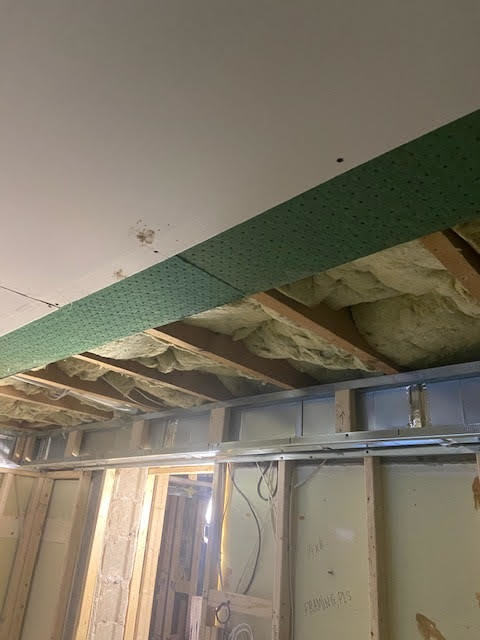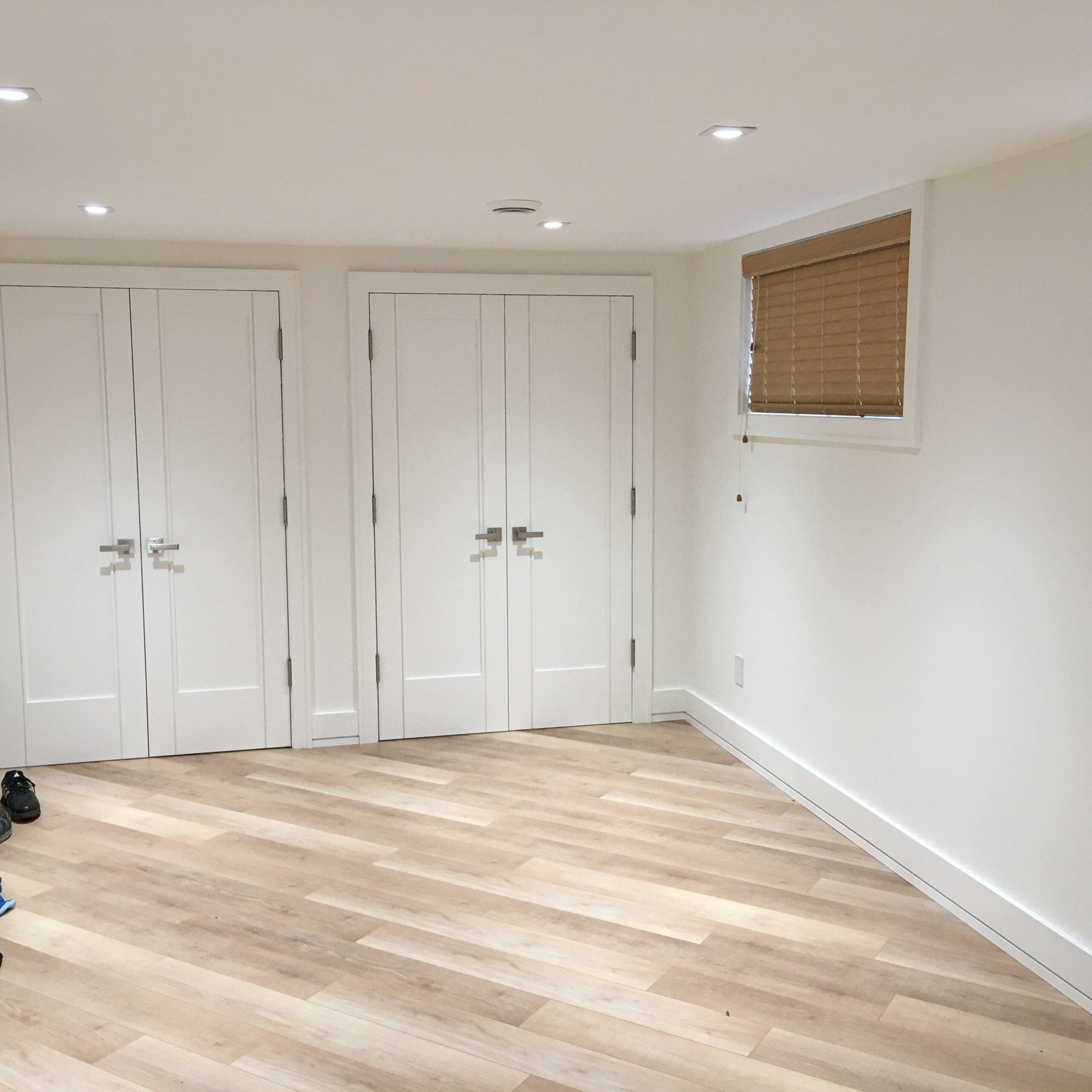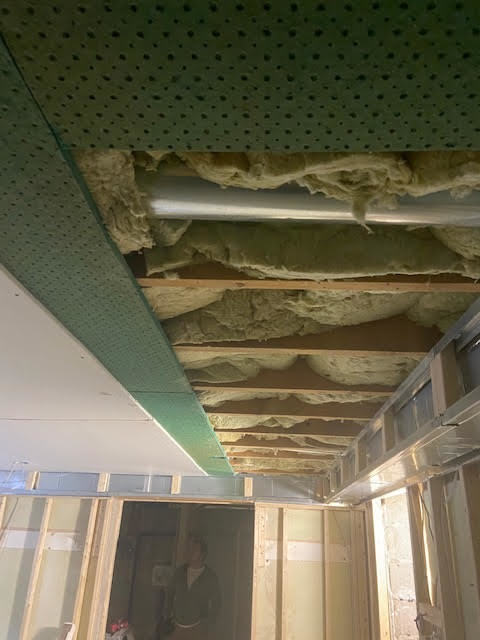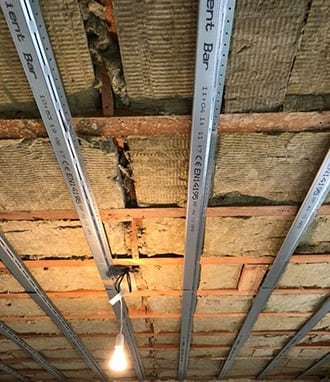Recently, a client retained me to review his basement soundproofing job. Unfortunately, the job was done by his contractor, who was not a specialized soundproofing contractor. As a result, it was bungled.
More...
State of the soundproofing job
The client provided a picture of the job in progress. Ceiling joists are 2” x 10” wood. There are green Sonopan panels [reference 1] attached to the joists. 5/8” drywall is attached over the panels. There is 3” rock wool insulation between the joists. The floor above the basement is finished with hardwood.
The client’s contractor, not being a soundproofing contractor, thought that this was an adequately soundproofed assembly. Nevertheless, the client was not satisfied. My inspection and test proved that the client’s dissatisfaction was justified.
This assembly type (not including the duct chases) has an STC value of 35, as approximately simulated using the INSUL program [2]. This is entirely inadequate. Ontario Building Code requires a minimum STC 50 between residential units.
Ducts in the ceiling are enclosed in a drywall chase, as visible in the client-supplied photo. There is no insulation around the ducts.
The assembly with Sonopan panels installed by the client’s contractor is not included in the list of acoustically tested assemblies [3] by the Sonopan manufacturer. However, their website is misleading. It appears to imply that this assembly is acceptable.
Heating and air-conditioning in the house are by forced air furnace located in the basement. Ducting for the basement is a separate zone with dedicated ducts. As a result, there is no issue with noise conducted by ducts, as in most basement apartments.
Noise reduction test
I have performed a quick and straightforward noise reduction test. The test result was close to the noise reduction value obtained by the approximate simulation of the ceiling assembly. The simulation also indicated that the sound transmission class of the existing ceiling is STC 35, which is low.
Basement soundproofing improvements
The client wished to improve the basement soundproofing without lowering the existing ceiling surface—the newly completed ceiling needed to be modified.
I have recommended ripping out the existing drywall and Sonopan panels. Add insulation to a thickness of at least 6 inches. Then install resilient channels 24” apart and 5/8” noise-reducing drywall. This type of ceiling assembly has STC better than 50 [4]. This assembly's impact noise reduction is noticeable but less so than the reduction of airborne noise.
The surface of this ceiling will be ¼” higher than the existing drywall surface.
Alternatively, instead of noise-reducing drywall, install two layers of 5/8” Type X drywall with Green Glue [6] between layers. If you are installing two layers of drywall, install the resilient channels 16” apart. This assembly has an STC of about 57, based on INSUL simulation.
The surface of this ceiling will be 3/8” lower than the existing drywall surface.
My detailed recommendations include instructions that can be executed by any competent contractor or preferably by a specialized soundproofing contractor.
Should you hire a soundproofing contractor?
The moral of this story is that a bungled soundproofing job is twice as expensive as a competently done job. The basement soundproofing needs to be done twice if a soundproofing contractor does not do it the first time. Better still, get proper soundproofing advice from a soundproofing consultant in advance. He will then refer a specialized contractor.
If you would like to contact the author of this article to request a similar consultation, preferably before you allow your contractor to botch the job, please click on the button below.
References:
[1] Sonopan
[2] INSUL simulation program
[3] Sonopan assemblies
[4] National Building Code of Canada 2015, Division B, Table 9.10.3.1.B, Assembly No. F8d
[5] Green Glue
We always appreciate your feedback. Please use the form below to submit your comments.



